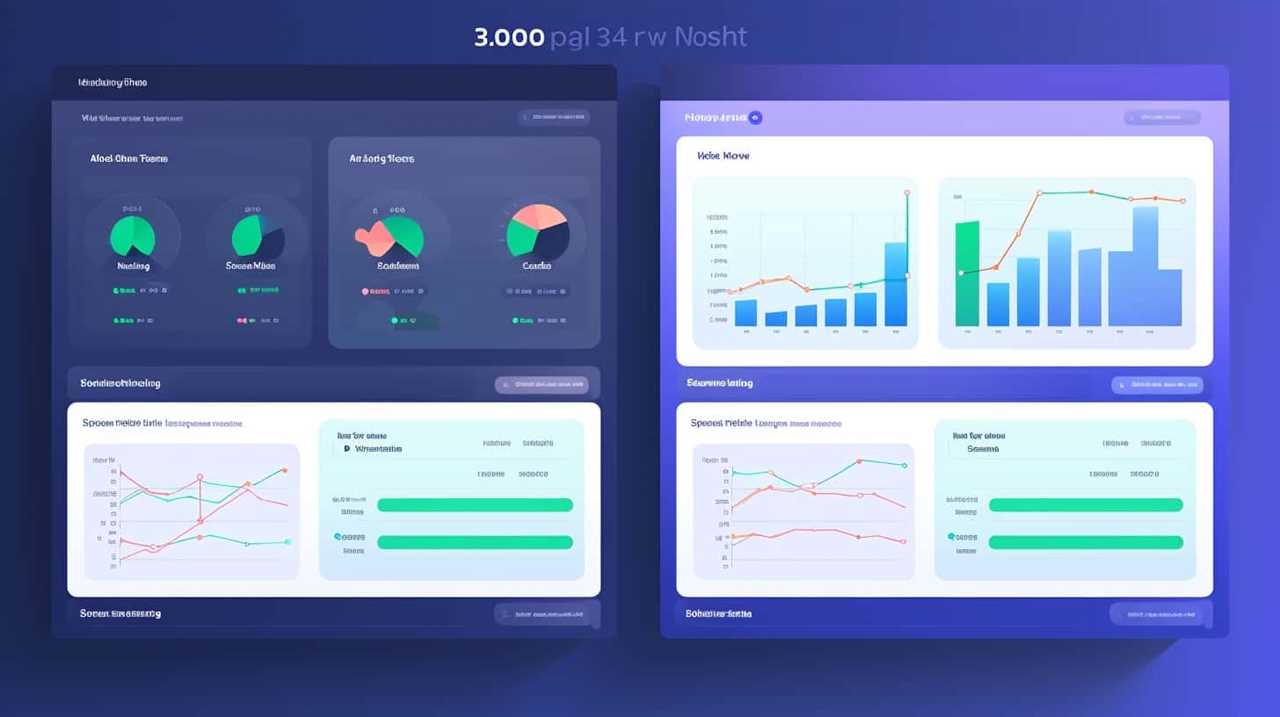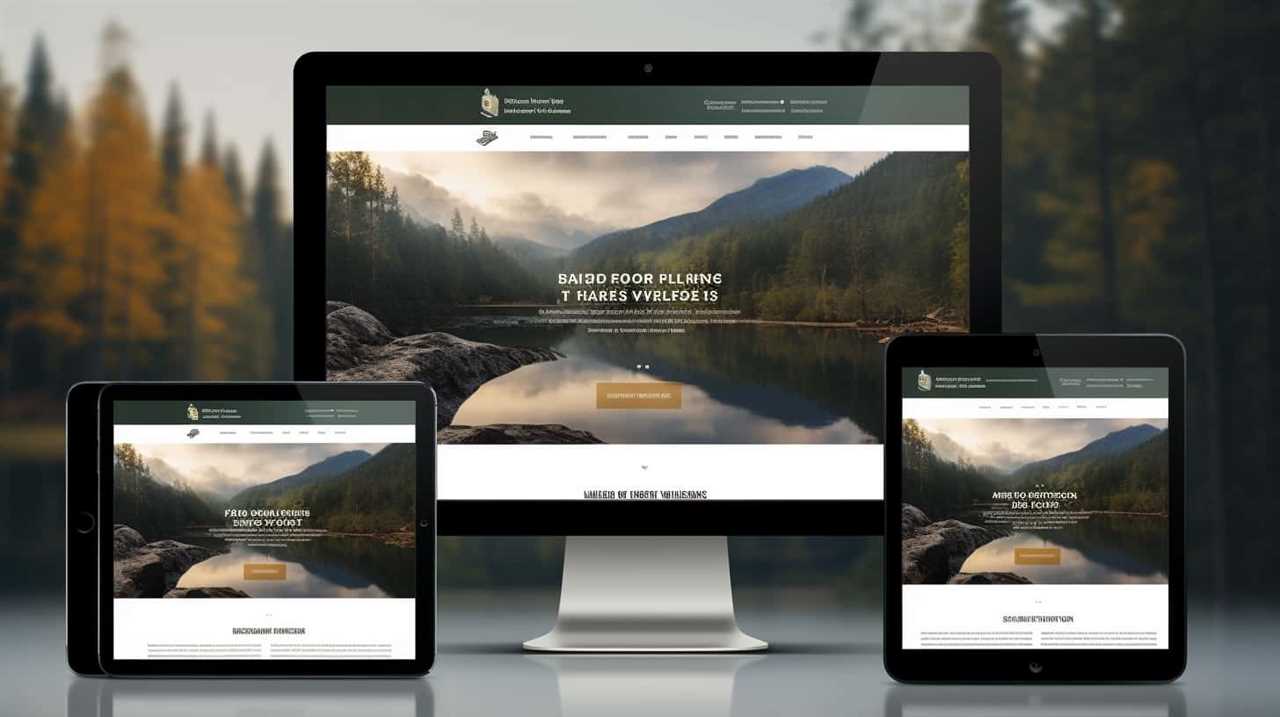I’ve discovered the secret to achieving success online through Google Ads.
Want to know the secret? It starts with identifying your target audience and crafting compelling ad copy.
Then, select the right keywords and set up your Google Ads account.
Optimize your campaigns for success and track your performance.

With smart bidding, you can maximize your budget and scale up your success.
Join me on this journey of writing your online success with Google Ads for independent publishers.
Key Takeaways
- Google Ads provides comprehensive analytics to measure ad effectiveness and track metrics in real-time.
- Understanding the target audience is crucial for creating effective Google Ads and tailoring ads for relevance and engagement.
- Demographics, interests, and relevance play a significant role in connecting with the target audience and building brand awareness.
- Narrowing ad targeting through keyword research and optimization techniques maximizes the performance of Google Ads and drives more traffic to the website.
The Power of Google Ads
I frequently use Google Ads to drive success for my independent publishing business. The power of Google Ads lies in its ability to measure ad effectiveness and implement strategic ad placement strategies.
As an independent publisher, it’s crucial to have a clear understanding of how well your ads are performing and whether they’re reaching your target audience effectively. Google Ads provides comprehensive analytics that allow me to measure the effectiveness of my ads in real-time. I can track metrics such as click-through rates, conversion rates, and cost per acquisition, enabling me to make data-driven decisions and optimize my campaigns for maximum results.

Ad placement strategies are equally important when it comes to the success of Google Ads campaigns. With Google Ads, I’ve the flexibility to choose where my ads appear and target specific demographics, locations, and interests. By strategically placing my ads on relevant websites and targeting the right audience, I can ensure that my message reaches the right people at the right time. This targeted approach not only increases the chances of conversions but also helps me maximize my advertising budget.
Now that we’ve explored the power of Google Ads and its ability to measure ad effectiveness and implement strategic ad placement strategies, let’s dive into the next step: identifying your target audience.
Identifying Your Target Audience
As an independent publisher, it’s crucial to understand your target audience in order to create effective Google Ads. By analyzing demographics and interests, you can identify the specific characteristics and preferences of your audience.
This knowledge allows you to tailor your ads for relevance and engagement, capturing the attention of your target audience and increasing the chances of conversion. Additionally, narrowing your ad targeting based on factors such as location and behavior helps you reach the right people at the right time, maximizing the impact of your advertising efforts.

Demographics and Interests
My target audience’s demographics and interests play a crucial role in the success of my Google Ads as an independent publisher. Personalization and customization are key factors in reaching and engaging with my audience effectively.
By understanding their demographics, such as age, location, and gender, I can tailor my ads to resonate with their specific needs and preferences. Additionally, it’s essential to constantly adapt to changing demographics, as the interests and behaviors of my target audience may evolve over time.
This requires continuous research and analysis to stay ahead of the curve and ensure that my ads remain relevant and appealing. By recognizing the importance of demographics and interests, I can craft compelling Google Ads that effectively connect with my target audience, ultimately driving the success of my online endeavors.
Relevance and Engagement
The identification of one’s target audience’s relevance and engagement is crucial for independent publishers to succeed in Google Ads. In order to effectively reach and engage the right audience, it is important to understand their interests, preferences, and behaviors. This can be achieved by measuring ad effectiveness and building brand awareness. Let’s take a closer look at these two key factors:

| Measuring Ad Effectiveness | Building Brand Awareness |
|---|---|
| Analyze click-through rates and conversion rates to determine the success of your ads. | Develop a strong brand identity and consistent messaging to increase recognition and recall. |
| Monitor engagement metrics such as time spent on site, bounce rate, and social media interactions. | Utilize targeted advertising campaigns to reach a wider audience and create a buzz around your brand. |
Narrowing Ad Targeting
I frequently narrow my ad targeting by identifying my target audience. When it comes to effective ad placement, understanding the behavior of my users is crucial. By analyzing their online activities, I can tailor my ads to reach the right people at the right time. This strategic approach allows me to maximize engagement and conversion rates.
To identify my target audience, I utilize various tools provided by Google Ads. The Audience Insights feature helps me gain valuable insights into the demographics, interests, and browsing habits of my website visitors. I also analyze the performance of my ads by monitoring metrics such as click-through rates and conversion rates. This data enables me to refine my targeting strategy and focus on the audience segments that are most likely to respond positively to my ads.
Crafting Compelling Ad Copy
How can I create ad copy that captivates my audience and drives results?
Crafting compelling ad copy is essential for improving ad performance and maximizing the impact of your Google Ads campaign. Through A/B testing ad variations, you can fine-tune your messaging to resonate with your target audience.

Here are three key strategies to help you craft ad copy that captures attention and delivers results:
- Understand your audience: Research your target market thoroughly to gain insights into their needs, preferences, and pain points. Use this information to create ad copy that speaks directly to their desires and offers solutions to their problems.
- Focus on benefits: Highlight the unique value proposition of your product or service in your ad copy. Clearly communicate the benefits that your audience will experience by choosing your offering. Use persuasive language and compelling visuals to make your ad stand out from the competition.
- Use strong calls-to-action: A well-crafted call-to-action (CTA) can significantly impact the success of your ad. Use action words and create a sense of urgency to prompt your audience to take the desired action, whether it’s making a purchase, signing up for a newsletter, or requesting more information.
Selecting the Right Keywords
As an independent publisher, choosing the right keywords for your Google Ads campaign is crucial for driving targeted traffic to your website.
Through effective keyword research techniques, you can uncover the phrases and terms that your target audience is searching for, allowing you to tailor your ads to their specific needs.
Keyword Research Techniques
By utilizing effective keyword research techniques, I’ve discovered the importance of selecting the right keywords for Google Ads as an independent publisher. Here are three key techniques I’ve found crucial for success:

- Competitive Analysis: Conducting a thorough competitive analysis allows me to understand the keywords my competitors are targeting. This helps me identify gaps in the market and uncover untapped opportunities.
- Keyword Research Tools: Utilizing powerful keyword research tools enables me to uncover relevant keywords with high search volumes and low competition. These tools provide valuable insights into search trends and help me optimize my ad campaigns.
- Long-tail Keywords: Focusing on long-tail keywords allows me to target a specific audience and increase the chances of conversion. These keywords are more specific and have less competition, making them an excellent choice for independent publishers.
By employing these techniques, I’m able to select the right keywords that align with my target audience’s search intent and maximize the performance of my Google Ads.
Now, let’s dive into the next section and explore the importance of targeting niche keywords.
Targeting Niche Keywords
After employing effective keyword research techniques, I’ve determined the significance of targeting niche keywords as an independent publisher.
Finding profitable niches is crucial for success in the online publishing industry. By identifying specific topics or areas of interest that have a smaller but dedicated audience, independent publishers can tap into a niche market and attract a more engaged and loyal readership.

However, simply finding profitable niches isn’t enough. It’s equally important to implement keyword optimization techniques to ensure that your content is discoverable by search engines and relevant to your target audience. By strategically incorporating niche keywords into your content, you can increase your visibility, drive more traffic to your website, and ultimately boost your online success as an independent publisher.
Long-Tail Keyword Strategy
I use a long-tail keyword strategy to select the right keywords for my Google Ads as an independent publisher. This approach involves conducting thorough long-tail keyword research to identify specific and highly targeted keywords that are relevant to my niche. By optimizing my ads with these long-tail keywords, I’m able to reach a more focused audience that’s actively searching for the content I provide.
Here are three key reasons why long-tail keyword optimization is crucial for my success:
- Increased visibility: Long-tail keywords help me rank higher in search engine results, making it easier for potential readers to find my website.
- Higher conversion rates: By targeting more specific keywords, I attract visitors who are more likely to engage with my content and take desired actions, such as subscribing or purchasing.
- Lower competition: Long-tail keywords often have less competition, allowing me to gain a competitive edge and maximize my advertising budget.
With a well-executed long-tail keyword strategy, I’m able to drive targeted traffic to my website and achieve online success as an independent publisher.

Setting Up Your Google Ads Account
To kickstart your online success with Google Ads, I recommend starting by creating your Google Ads account. Setting up your account is crucial for effectively managing your ad campaigns and maximizing your return on investment. To help you get started, here are some account setup best practices and ad campaign organization tips:
| Account Setup Best Practices | Ad Campaign Organization Tips |
|---|---|
| Define your advertising goals | Create separate campaigns for different products or services |
| Choose the right campaign type | Group related keywords into ad groups |
| Set a budget and bidding strategy | Write compelling ad copy |
| Install conversion tracking | Use ad extensions to enhance your ads |
| Link your Google Analytics account | Monitor and optimize your campaigns regularly |
Optimizing Your Campaigns for Success
To achieve success with your Google Ads campaigns, it’s essential to optimize them for maximum performance. Here are three key strategies to help you optimize your campaigns and achieve better results:
- Conversion tracking techniques: By implementing conversion tracking, you can measure the effectiveness of your ads and understand which ones are driving the most conversions. This valuable data allows you to make informed decisions about your campaign optimization.
- A/B testing for ad optimization: A/B testing involves creating multiple variations of your ads and testing them against each other to determine which performs better. By experimenting with different headlines, images, and calls-to-action, you can identify the most effective elements and refine your ads for optimal performance.
- Continuous monitoring and adjustments: Optimization is an ongoing process. Regularly monitor your campaign performance and make adjustments based on data insights. Keep a close eye on key metrics such as click-through rates, conversion rates, and cost per conversion. This will help you identify areas for improvement and make data-driven optimizations to maximize your campaign’s success.
By implementing these strategies, you can optimize your Google Ads campaigns to achieve better results and increase your chances of success.
Now, let’s explore the next step in the process: tracking and analyzing performance to further enhance your campaigns.

Tracking and Analyzing Performance
Now, let’s delve into tracking and analyzing the performance of your Google Ads campaigns to gain valuable insights and optimize your results.
Measuring campaign effectiveness is crucial for understanding how well your ads are performing and whether they’re achieving your desired goals. By analyzing key metrics such as click-through rates, conversion rates, and cost per conversion, you can determine which campaigns are driving the most success and allocate your resources accordingly.
Understanding user behavior is another important aspect of tracking and analyzing performance. By examining data such as user demographics, device usage, and time of engagement, you can tailor your ads to better target your audience and improve overall campaign performance. For example, if you find that a significant portion of your users are accessing your website through mobile devices, you can optimize your ads for mobile viewing to maximize their effectiveness.
By consistently monitoring and analyzing your campaign performance, you can identify trends, patterns, and areas for improvement. This data-driven approach allows you to make informed decisions and optimize your Google Ads campaigns for maximum success.

Now that you have a solid understanding of how to track and analyze your campaign performance, let’s shift our focus to maximizing your budget with smart bidding.
Maximizing Your Budget With Smart Bidding
By utilizing smart bidding strategies, I can optimize my budget and maximize the effectiveness of my Google Ads campaigns. With these budget optimization techniques, I can ensure that every dollar I spend on advertising is used efficiently, driving the best possible results for my website.
Here are three smart bidding strategies that can help me achieve this:
- Target CPA (Cost-Per-Acquisition): This strategy allows me to set a target cost for each conversion. Google Ads will automatically adjust my bids to maximize conversions within my specified budget. By focusing on acquiring customers at a specific cost, I can allocate my budget more effectively and generate higher returns on my investment.
- Target ROAS (Return-On-Ad-Spend): With this strategy, I can set a target return on ad spend. Google Ads will then adjust my bids to maximize revenue or conversion value, based on the return I want to achieve. This approach is particularly useful for e-commerce businesses looking to generate a specific level of revenue from their advertising efforts.
- Enhanced CPC (Cost-Per-Click): This strategy allows me to manually set my bids while giving Google Ads the freedom to adjust them based on the likelihood of conversion. By leveraging machine learning, this strategy can help me get more conversions within my budget by automatically increasing bids for clicks that are more likely to lead to conversions.
By implementing these smart bidding strategies, I can ensure that my budget is used wisely, maximizing the effectiveness of my Google Ads campaigns and driving the best possible results for my website.

Now, let’s explore how to scale up our success with Google Ads.
Scaling up Your Success With Google Ads
I expanded my online success with Google Ads by scaling up my campaigns. Scaling up your reach is a crucial step in maximizing ad conversions and taking your online presence to new heights.
When I first started using Google Ads, I carefully crafted my campaigns, targeting specific keywords and demographics. As I began to see positive results, I realized that it was time to scale up my efforts.
To scale up my success, I first analyzed the data from my existing campaigns. I looked for patterns and trends that indicated which keywords and demographics were performing the best. Armed with this knowledge, I created new campaigns that targeted similar audiences and expanded my reach even further.

I also increased my budget to accommodate the increased reach. By investing more in my Google Ads campaigns, I was able to reach a wider audience and increase the likelihood of ad conversions. It was a strategic move that required careful planning and analysis of my target audience.
Scaling up your success with Google Ads requires a combination of creativity and analytics. It’s important to continually monitor and optimize your campaigns to ensure that they’re delivering the desired results. By scaling up your reach and maximizing ad conversions, you can take your online success to new heights.
Frequently Asked Questions
Can I Use Google Ads for My Personal Blog or Website?
Yes, you can definitely use Google Ads to promote and monetize your personal blog or website. It’s a strategic way to increase visibility and generate income while showcasing your expertise to a wider audience.
How Long Does It Take to See Results From Google Ads?
It typically takes a few weeks to see results from Google Ads. Measuring effectiveness and optimizing campaigns are key to achieving success. It requires a creative, analytical, and strategic approach to master the art of online advertising.

What Is the Average Cost per Click for Google Ads?
The average cost per click for Google Ads is influenced by various factors, such as keyword competitiveness and ad performance. Understanding these metrics is crucial for strategic decision-making and achieving mastery in online advertising.
Can I Run Google Ads Campaigns in Multiple Languages?
Yes, you can run multilingual Google Ads campaigns to target specific demographics. It’s a strategic way to reach a wider audience and increase your online success as an independent publisher.
Are There Any Restrictions on the Type of Content That Can Be Promoted Through Google Ads?
There are some restrictions on the type of content that can be promoted through Google Ads. It’s crucial to understand these content restrictions to ensure eligibility for running successful campaigns.
Conclusion
In the vast digital landscape, Google Ads has proven to be a powerful tool for independent publishers to thrive. By identifying their target audience, crafting compelling ad copy, and selecting the right keywords, publishers can effectively reach their desired audience.

Setting up and optimizing their Google Ads account, tracking and analyzing performance, and maximizing their budget with smart bidding are essential steps for success.
Like a compass guiding a ship through uncharted waters, Google Ads can lead independent publishers to navigate their online success.










